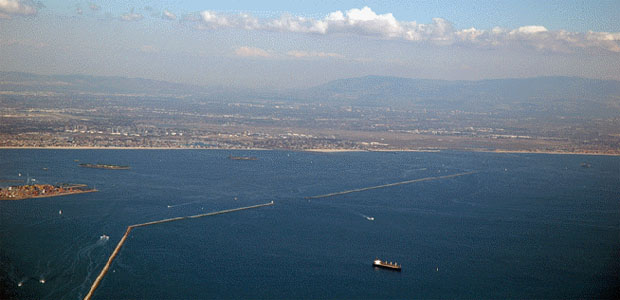
File photos.
Assemblymember Patrick O’Donnell will once again commemorate the glorious waves that once graced the shores of Long Beach in an effort to bring awareness to the effects of the Breakwater on the city and the potential that changing its current composition may bring to our coastline.
Beginning tomorrow—Saturday, June 4—O’Donnell will be paddling out with community members for the “Paddle Out in Memory of the Waves” event at the Granada Launch Ramp. A small ceremony providing an update on the U.S. Army Corps of Engineers study will precede the paddle out.
“What’s neat about [this] weekend’s event is that it’s something people can do to keep the effort alive,” O’Donnell told the Post regarding last year’s event.
Just this past year, progress involving a potentially reconfigured breakwater has inched forward.
In November, the U.S. Army Corps of Engineers approved a study of the Breakwater, dubbed the East San Pedro Bay Ecosystem Restoration Study. It is projected to begin in early 2016 and last about three years, costing about $3 million, with the City of Long Beach responsible for half of the cost.
The process to begin the study has been almost two decades in the making.
O’Donnell has long advocated for reconfiguring the breakwater, hosting awareness months since 2012. While O’Donnell doesn’t advocate removing the breakwater in its entirety, he said reconfiguring it may provide Long Beach with an opportunity to improve recreational opportunities at the beach, return clean water to the waterfront and positively impact the economy.
“Did you know that before World War II, Long Beach was the Waikiki of Southern California?” the Surfrider website states. The site delves into the history of the Long Beach breakwater, which was created by the federal government and is operated by the Army Corps of Engineers.
Construction on the Long Beach federal breakwater began in 1941 and was completed in 1949 after pausing during World War II to allow the port and homes along the waterfront protections during unpredictable oceanfront storms.
The Surfrider Foundation and O’Donnell maintain that the lack of waves allows pollutants to stagnate in Long Beach waters. This, coupled with a lack recreational opportunities that would be boosted by waves (like surfing), leads to a lack of utilization of beaches, said O’Donnell.
“On an 84 degree day, you can look at the beaches, and no one is there,” said O’Donnell. He said the question was a matter of how to increase beach utilization and improve the water quality while also maintaining protections for the port.
“Anything we do, we want to make sure homes and maritime trade are protected,” he said.
{FG_GEOMAP [33.7562298,-118.13873490000003] FG_GEOMAP}

